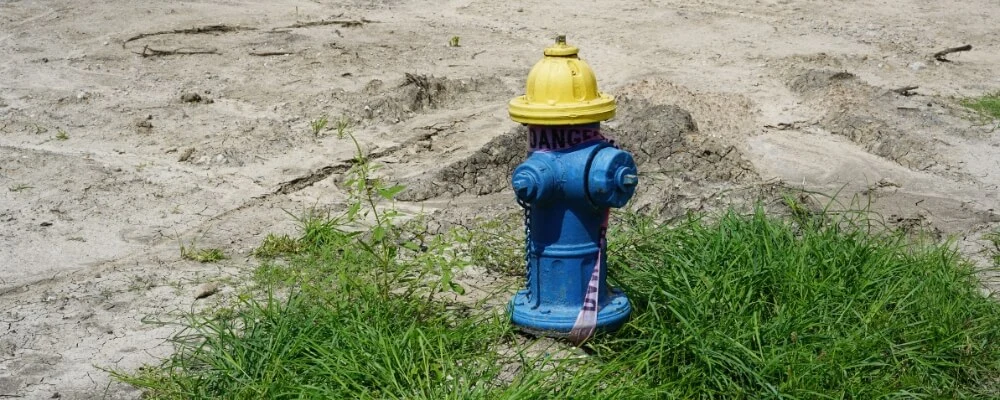There aren't any posts currently published in this category.
Every second matters when a fire starts. The timely availability of water may determine the difference between a minor issue and a catastrophic one. Fire hydrants and the equipment that go along with them are useful in this situation. An example would be a fire hydrant. What is the general operation of the fire hydrant system? Many of us are unaware of the intricate details of these brightly colored lights that adorn the streets and neighborhoods of our cities and play a crucial part in fire safety.
We shall go deeply into the world of fire hydrants in this blog, illuminating their operation, types, and the crucial regulations affecting their use. Furthermore, we will show you how to install a fire hydrant system in its entirety.
This blog promises a comprehensive grasp of the fire hydrant ecology, regardless of whether you are a safety professional, a curious homeowner, or just someone focused on understanding community safety equipment. Let us start now!
WHAT IS A FIRE HYDRANT?
A fire hydrant is a point of access for firemen to a water source. It belongs to the active fire defense system. It functions as a sturdy vertical pipe that is accessible above ground and has one or more nozzles that can connect to fire hoses. This arrangement offers a ready source of water to put out a potential fire, frequently adding to the water supply found on fire vehicles.
To ensure that they are both widely dispersed and easily accessible in the event of a fire, fire hydrants are strategically placed. To supply enough water flow and pressure, they are often connected to large-diameter water mains. Firefighters attach hoses to these hydrants when a fire breaks out, and the water is then pumped under pressure to the spot where it is needed to put it out.

WHAT IS A FIRE HYDRANT SYSTEM?
An active fire protection strategy, a fire hydrant system offers a fast supply of water to put out possible flames. It is made up of several parts that work together to make sure there is enough water available at the right pressure and flow for use in fighting fires. A network of pipes directly connected to the primary water supply is typically used to connect the system. This system feeds water to numerous hydrant outlets placed thoughtfully all around a building or an area.
Water supply source (which can be tanks, dams, or mains), pipework and valves (that control and direct the flow of water), booster pumps (to ensure adequate pressure, if needed), and hydrant outlets (where firefighters can connect hoses to draw water) are typically the essential parts of a fire hydrant system. The method makes it easier for firefighters to reach and deliver massive amounts of water to a fire, improving their capacity to successfully put it out.
For a few reasons, the Fire Hydrant System is of utmost significance in the field of fire safety.
- Quick access to water: Time is of the essence in the event of a fire. A fire hydrant system makes sure that there is ample water on hand to put out fires and stop them from spreading quickly.
- Adequate Pressure and Flow: Unlike relying entirely on conventional water sources, the hydrant system is built to deliver water at the required pressure and flow rate, enhancing the effectiveness and efficiency of firefighting operations.
- Protection for Big Facilities: In large structures like factories, warehouses, and multi-story buildings, fires can break out in isolated locations where there may not be easy access to water right away. A properly placed hydrant system makes sure that no area is left exposed.
- Sprinkler systems and fire extinguishers are necessary, although they might not be sufficient in the case of large flames. These systems are enhanced by a hydrant system, which offers an additional line of defense.
- Firefighters’ safety is increased because they don’t have to carry water back and forth from remote sources because they can refill their fire trucks using the hydrant system. This ease of access can help save lives by allowing firefighters to continue fighting the fire unabatedly.
- Economic Protection: An efficient fire hydrant system can avert significant property loss in addition to the obvious safety advantages, potentially sparing businesses and communities millions in damages and insurance claims.
- Compliance with Regulations: To ensure that buildings are prepared for emergencies, several jurisdictions include the installation of fire hydrant systems in their building and safety rules.
- Community Safety: Hydrant systems, particularly in metropolitan locations, provide services to both the surrounding community and individual structures. A ready supply of water can be essential in halting the spread of fires to surrounding buildings or terrain.
- Enhanced Preparation: Fire situations can happen at any time. Installing a fire hydrant system represents proactive preparedness, ensuring that the essential infrastructure is available to respond appropriately even in the most extreme situations.
The Fire Hydrant System, which offers a reliable and strong way to fight major fires, save property, and save lives, is essentially a cornerstone of the fire protection infrastructure.

HOW DO FIRE HYDRANTS WORK?
A significant amount of water may be quickly accessed by clever devices called fire hydrants, which are designed expressly for use in firefighting operations. Here is how they function:
- Water Source Connection: Fire hydrants are normally connected to either the primary water supply system for the city or a separate fire water supply system. This link makes sure that there is always a source of water available.
- Valve Mechanism: The hydrant’s primary valve is located inside and is always closed unless the hydrant is engaged. As a “dry-barrel” hydrant, this valve normally rests several feet below the surface to prevent freezing in colder climes. A “wet-barrel” hydrant, which occurs when water is present up to the hydrant head, is common in warmer areas.
- Activation: Firefighters or other authorized personnel must attach a hose to one of the hydrant’s nozzles and then use a hydrant wrench to unlock it in order to gain access to the water. The main valve is opened by turning a stem within the fire hydrant in this manner.
- Water Flow: When the main valve is opened, the subsurface supply of water flows up the hydrant’s vertical pipe and out the hose attached. Although the water’s pressure is normally sufficient to put out fires, it can occasionally be increased using the pumps on a fire truck.
- Pressure Regulation: Firefighters can regulate the pressure and amount of the water by manipulating the valve thanks to the hydrant’s design. The flow is maximized when the valve is fully opened, whereas it is reduced when just partially opened.
- Shutoff: Using the hydrant wrench, turn the stem back to its initial position to shut off the hydrant following the firefighting operation. Any residual water in the vertical pipe of dry-barrel hydrants will drain away through tiny weep holes at the base to prevent freezing.
- Maintenance: Regular inspections and maintenance are essential to ensuring that the hydrants continue to function. This can involve doing regular pressure checks and flushing to ensure proper water flow and the removal of any sediment, as well as checking for leaks and providing easy access (by removing any obstacles or collected snow).
In conclusion, fire hydrants function by giving a direct route to a plentiful water supply. Their quick deployment in times of crisis ensures firefighters have the water volume and pressure required to put out fires thanks to their straightforward yet effective design.

TYPES OF FIRE HYDRANTS
Fire hydrants are designed to suit different environments, needs, and climatic conditions. Here are the main types of fire hydrants:
- Dry Barrel Hydrants
Dry barrel hydrants have a valve that is deep below the frost line, which is the depth in the ground where freezing temperatures generally occur. They are primarily made for colder areas. By placing the valve in this location, water does not remain in the hydrant’s upper portion, eliminating any chance that it would freeze, which could reduce functioning or harm the equipment.
Water from this subsurface location is forced upward into the hydrant during a fire emergency and then directed forth through a connected hose, guaranteeing a steady flow even in the coldest temperatures.
- Wet Barrel Hydrants
These hydrants are typically found in temperate climes where freezing is less of a worry. They are always filled with water to the outlets. The wet barrel hydrant is distinguished by the fact that each exit has its own unique valve.
This configuration gives firefighters the flexibility to attach numerous hoses at once and individually control the flow from each, which improves the effectiveness of their firefighting efforts.
- Wall Hydrants
Wall hydrants are fixed directly into the walls of buildings, making them perfect for places like industrial complexes or airport runways. They are specially constructed for certain placement needs.
Despite having a design that resembles dry barrel hydrants, their installation in walls frequently complies with unique firefighting tactics developed for the buildings in which they are located, enabling quicker reactions during crises.
- Standpipe
Standpipes are a crucial piece of equipment for firefighting operations and are typically found inside of bigger structures, particularly high-rise buildings. They consist of massive piping networks that are installed with hose connections at predetermined intervals and extend vertically through the building.
Firefighters can access the building’s water supply at different floors thanks to this design, which avoids the need for them to carry hoses up from the ground floor and maximizes fire suppression efforts.
- Flush Hydrants
Flush hydrants are level with the ground and don’t have the recognizable protruding “barrels” we typically associate with hydrants. Maintenance and testing of the water system is their principal responsibility. They provide a way to assess the water pressure and flow in newly installed or repaired water mains. Additionally, their design enables a powerful water expulsion that is helpful in clearing the system of sediments and ensuring water purity.
- Post Indicator Hydrants
These specialized hydrants have an extra element that makes it evident whether the valve is open or closed: a visible post. They frequently connect to particular fire protection systems, such as sprinkler systems in commercial buildings. The post ensures that the system is operational when required by serving as a quick reference for fire personnel.
- Recessed Hydrants
These hydrants are integrated into sidewalks with a focus on aesthetics and pedestrian movement, particularly in regions with heavy foot traffic or when space is at a premium. To reach the hydrant, a plate flush with the ground covering them can be removed. Due to its design, the fire hydrant is both easily accessible in case of an emergency and discrete during routine activity.
- Pillar Hydrants
Pillar hydrants are a typical sight in many parts of Europe and stand tall with their control mechanisms at a handy height. Beyond their practical advantages, they frequently have a distinctive design that makes them simple to recognize. Their vertical design guarantees that connections and controls are elevated, shielding them from potential harm and ground-level obstacles.
Each type of hydrant is created with a particular environment and purpose in mind. The right choice guarantees that water is easily accessible when needed, especially in an emergency. To keep all hydrants in good operating order, routine maintenance and testing are essential.

